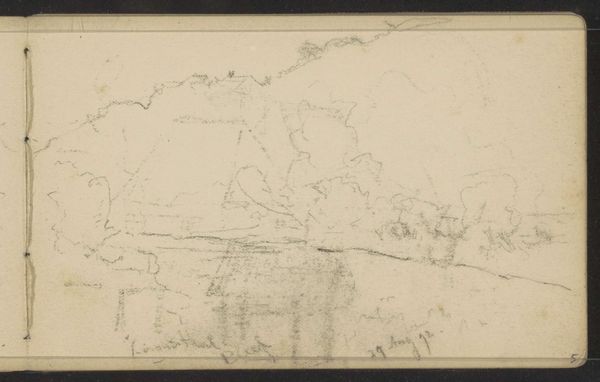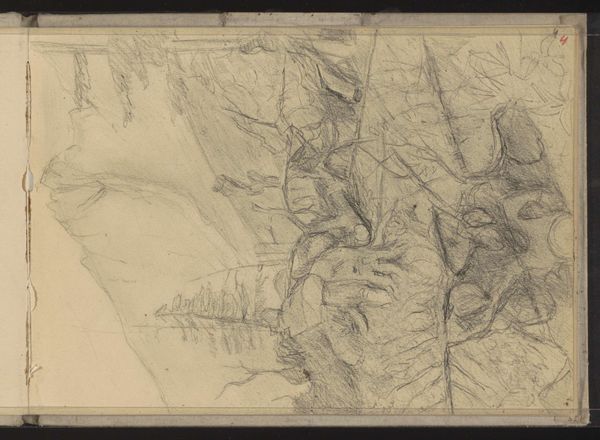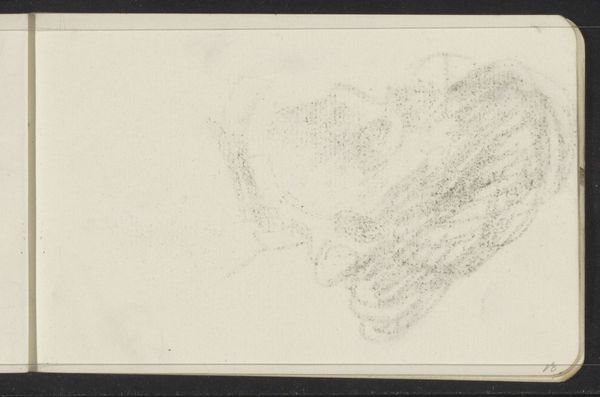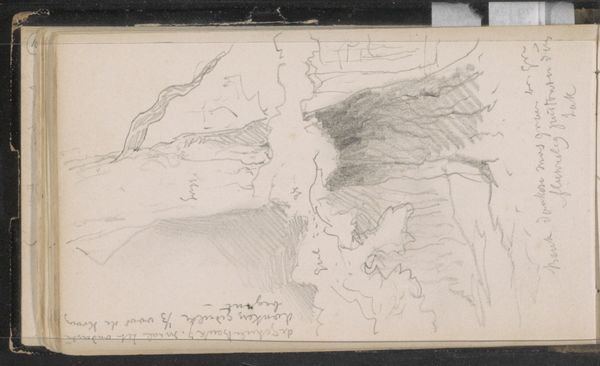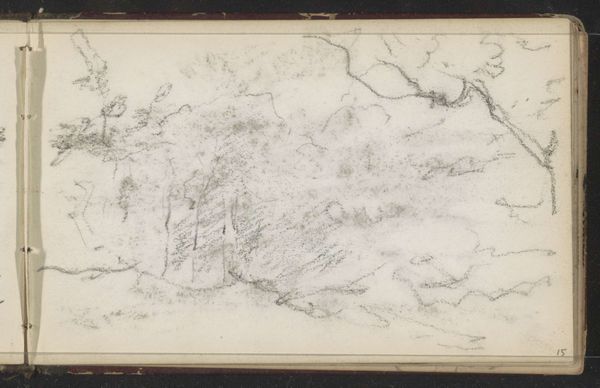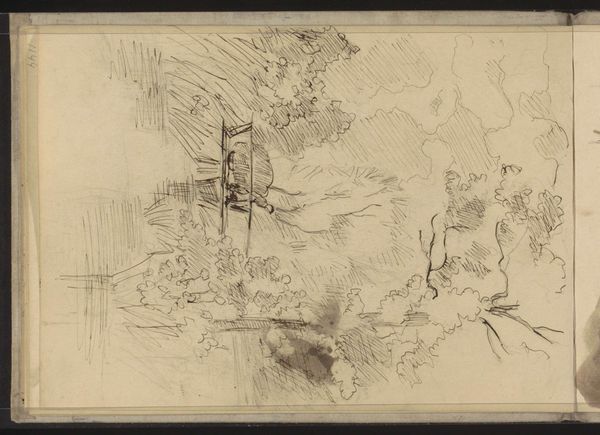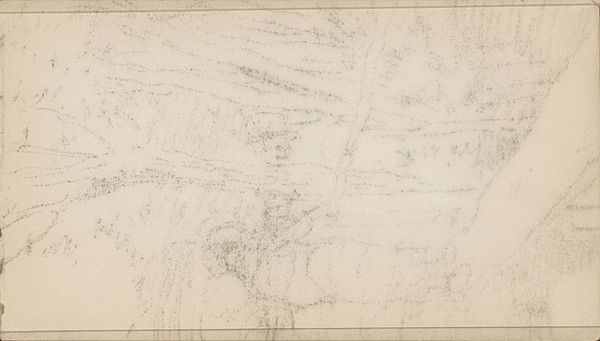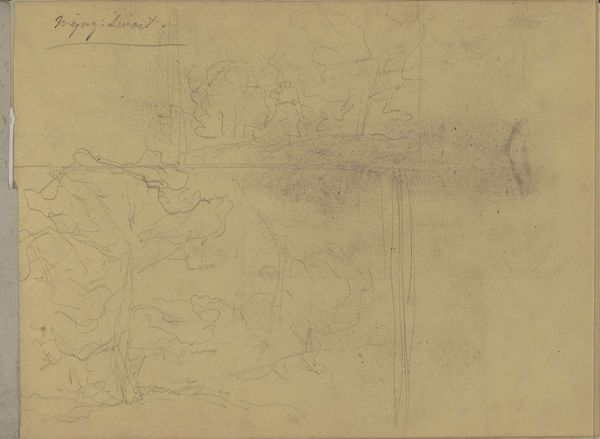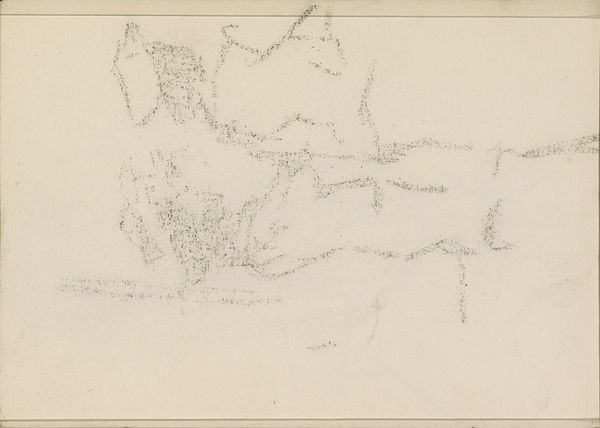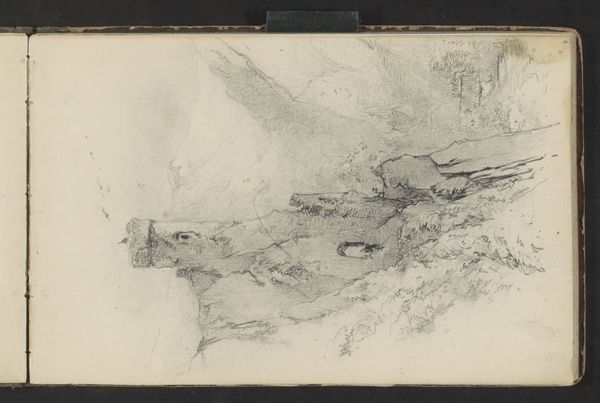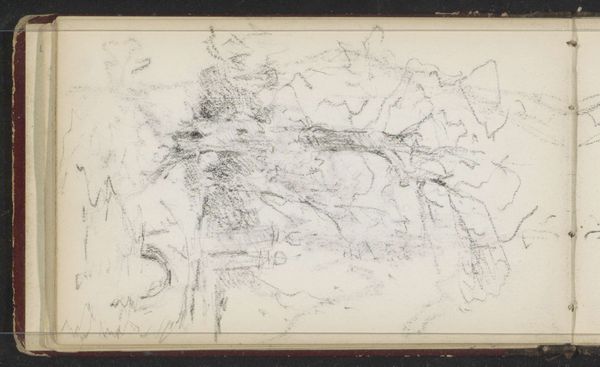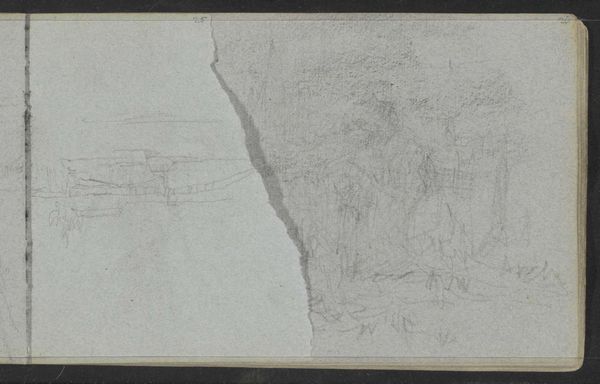
drawing, pencil
#
drawing
#
landscape
#
mountain
#
pencil
Copyright: Rijks Museum: Open Domain
Curator: Jozef Israëls' "Berglandschap met dennen en keien," dating from 1834 to 1911 and residing here at the Rijksmuseum, strikes me immediately with its dynamic composition. The juxtaposition of the pine trees with the imposing rocks suggests a certain ruggedness. Editor: The overwhelming sense of raw material certainly grabs my attention first. Look at the density of the pencil strokes, practically layered on top of one another. You can almost feel the pressure the artist exerted, imbuing a tactile quality to the paper itself. It begs the question—where did he acquire the graphite? Curator: I appreciate your insight into the process. However, the strength of the image lies in its representation. Notice how the composition directs the eye—from the light-filled distance towards the solidity of the rocks. It’s a study in contrasts, no? Editor: Precisely, and I think this is intrinsically linked with the labor and time involved in making it. What narratives of resource extraction or artisanal craftsmanship might lie behind each mark? Moreover, how would the acquisition of the materials impact access and democratization in art creation? It demands such questions of materiality to enhance engagement. Curator: Perhaps. Yet, regardless of graphite origins, it’s the artist's intention that sculpts the composition and evokes particular aesthetic experiences for the observer, which must remain front and center. See how the lines create form and guide you? Editor: But by separating "intention" from the material reality that informs every mark and contour we run the risk of mystifying art, no? We could easily turn back and study how Jozef Israëls procured and prepared his materials. What workshops did he perhaps study within and what apprentices assisted? By addressing materialist concerns in concert with formal aspects, one can appreciate how artistic expression mirrors the conditions of its creation and can tell its broader cultural stories. Curator: Maybe a fusion between the two—process and form—allows one to view the artist’s intent but grounded in a concrete material plane, not purely in a subjective idea alone. Thank you, I have been stimulated and refreshed by your alternative viewpoints. Editor: Agreed. Every stroke reflects a nexus of material, process, and artistic expression that creates unique experiences which we will no doubt return to with the guidance you have brought forward here.
Comments
No comments
Be the first to comment and join the conversation on the ultimate creative platform.
